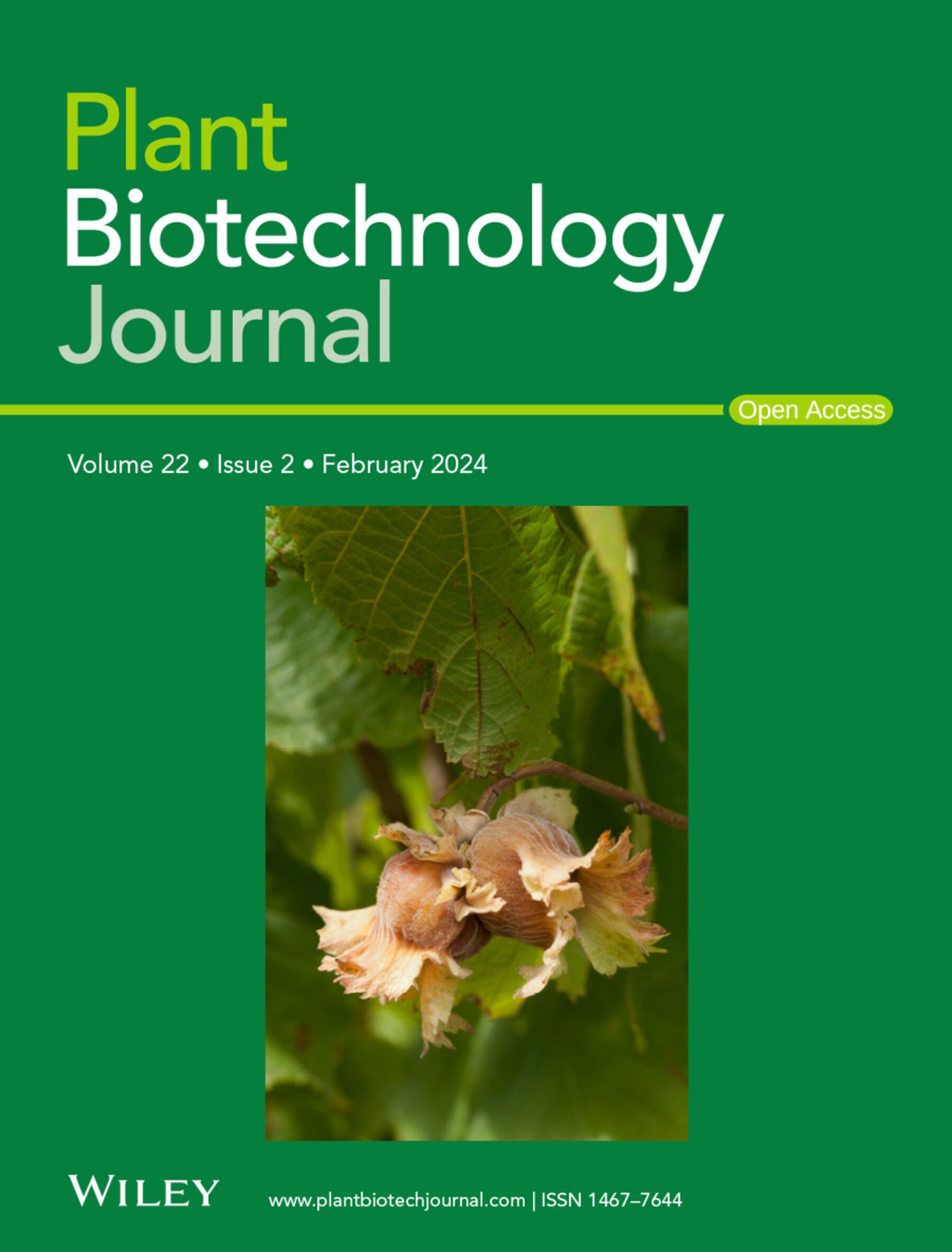藏红花类胡萝卜素生产的新型植物细胞悬浮平台及其对类胡萝卜素和挥发物的影响
IF 10.1
1区 生物学
Q1 BIOTECHNOLOGY & APPLIED MICROBIOLOGY
引用次数: 0
摘要
藏红花类次胡萝卜素,包括藏红花素、微藏红花素和番红花醛,是有价值的代谢物,具有药用和美容潜力。然而,它们的天然植物来源难以培育,这限制了大规模生产。类胡萝卜素裂解双加氧酶(CCDs)的鉴定,催化了其生物合成的第一步也是最关键的一步,使这些类胡萝卜素在异源植物系统中得以生产。在本研究中,我们旨在制备植物细胞悬液,表达藏红花CCD2和栀子花CCD4a,以及细菌植物烯合成酶,以促进类胡萝卜素的生物合成和CsUGT93P1,提高藏红花素的稳定性。以本烟属植物和烟叶为材料,建立了转基因细胞悬液。量2细胞。在表达GjCCD4a的BY‐2细胞中,藏红花素积累量达到770 μg/g DW,茉莉酸甲酯激发后藏红花素积累量进一步增加。值得注意的是,与野生型细胞相比,BY - 2转基因细胞的β -环柠檬醛含量增加了18000倍。表现最好的n - benthamiana和BY - 2系在波浪生物反应器中成功培养,证明了它们生产藏红花类伪胡萝卜素的潜力。在BY‐2生物反应器中,除了藏红花类伪胡萝卜素外,还产生了植物烯和大量的番茄红素,为平台增加了价值,并表明了类胡萝卜素途径的重塑。本研究为在植物细胞悬浮液中大规模生产藏红花类伪胡萝卜素和类胡萝卜素奠定了基础。本文章由计算机程序翻译,如有差异,请以英文原文为准。
Novel plant cell suspension platforms for saffron apocarotenoid production and its impact on carotenoid and volatile profiles
SummarySaffron apocarotenoids, including crocins, picrocrocin and safranal, are valuable metabolites with pharmaceutical and cosmetic potential. However, their natural plant sources are difficult to cultivate, which limits large‐scale production. The identification of carotenoid cleavage dioxygenases (CCDs), which catalyse the first and most critical step in their biosynthesis, has enabled the production of these apocarotenoids in heterologous plant systems. In this study, we aimed to generate plant cell suspensions expressing Crocus sativus CCD2 and Gardenia jasminoides CCD4a , along with a bacterial phytoene synthase to enhance carotenoid biosynthesis and CsUGT93P1 , which improves crocin stability. Transgenic cell suspensions were established from Nicotiana benthamiana plants and Nicotiana tabacum cv. BY‐2 cells. In BY‐2 cells expressing GjCCD4a , crocin accumulation reached 770 μg/g DW, which further increased upon methyl jasmonate elicitation. Remarkably, the BY‐2 transgenic cells exhibited an 18,000‐fold increase in β‐cyclocitral content compared to wild‐type cells. The best‐performing N. benthamiana and BY‐2 lines were successfully cultivated in wave bioreactors, demonstrating their potential for saffron apocarotenoid production. In the BY‐2 bioreactor, apart from saffron apocarotenoids, phytoene and notably high amounts of lycopene were produced, adding value to the platform and indicating a remodelling of the carotenoid pathway. This study establishes the viability and lays the foundation for the scalable production of saffron apocarotenoids and carotenoids in plant cell suspensions.
求助全文
通过发布文献求助,成功后即可免费获取论文全文。
去求助
来源期刊

Plant Biotechnology Journal
生物-生物工程与应用微生物
CiteScore
20.50
自引率
2.90%
发文量
201
审稿时长
1 months
期刊介绍:
Plant Biotechnology Journal aspires to publish original research and insightful reviews of high impact, authored by prominent researchers in applied plant science. The journal places a special emphasis on molecular plant sciences and their practical applications through plant biotechnology. Our goal is to establish a platform for showcasing significant advances in the field, encompassing curiosity-driven studies with potential applications, strategic research in plant biotechnology, scientific analysis of crucial issues for the beneficial utilization of plant sciences, and assessments of the performance of plant biotechnology products in practical applications.
 求助内容:
求助内容: 应助结果提醒方式:
应助结果提醒方式:


